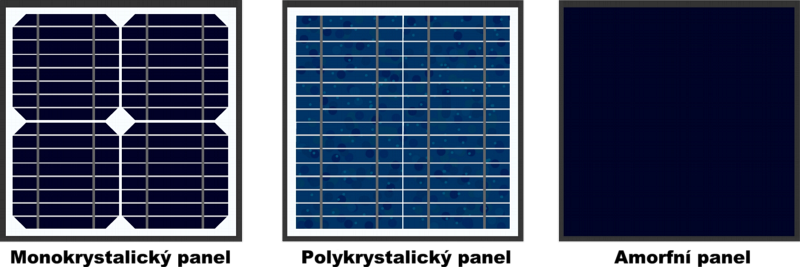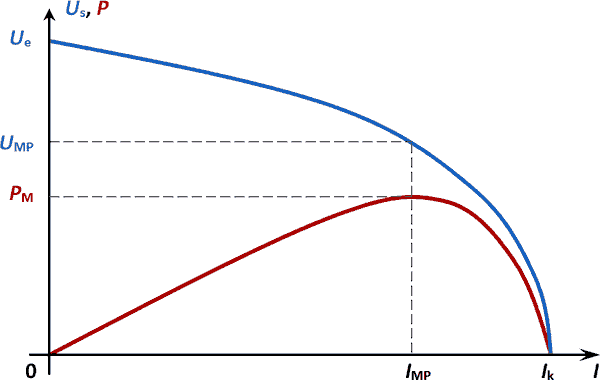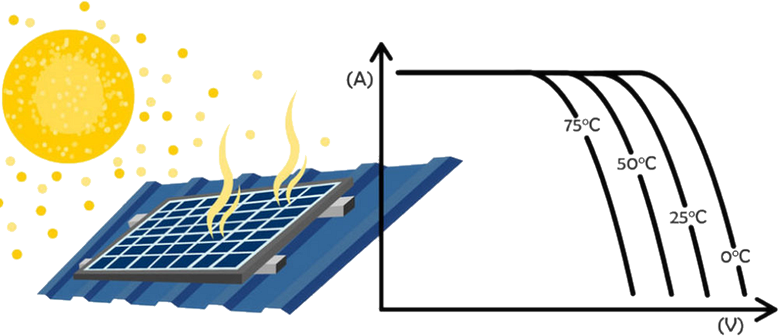Theory
Solar Cell
Photovoltaic History
The photovoltaic phenomenon was discovered by Antoine César Becquerel in 1839. However, the first functional solar cell was not built until 1884, 45 years after this discovery, by the American inventor Charles Fritts. This first cell was made of selenium semiconductor coated with a very thin layer of gold and had an efficiency of about 1 %. However, it was not clear how this solar cell worked. The photovoltaic phenomenon had to wait until 1904, when Albert Einstein described the principle of the so-called photoelectric effect, for which he later received the Nobel Prize. At that time, the first selenium cells had no chance of being used to generate electricity due to their low efficiency and high cost, but they were used as light sensors to determine the exposure time of cameras. The inventor of the solar cell as we know it today is the American engineer Russell Ohl. In 1939, he discovered the so-called "P-N junction", a region at the interface of a P-type semiconductor and an N-type semiconductor. P-N junctions are used in semiconductor devices such as diodes and transistors. During the development of materials for the production of the transistor, a solar cell was created as a by-product, then called a "photosensitive device" with an efficiency of about 5 %. Today, the most common monocrystalline cells have an efficiency of about 16 %.
Operating Principle
When a photon hits the material and the photon is absorbed, a so-called internal photovoltaic phenomenon (also known as "internal photovoltaic phenomenon") occurs when a photon with sufficient energy (at least 1.1 eV) hits the material, a negative electron is released from the atoms of the material and a hole with positive charge remains in its place. There is so-called electron-hole pairs generation. These free electrons and the resulting holes are separated by an electric field so that there is an excess of free electrons in the N region of the given P-N junction and an excess of holes in the P region. As a result, an electric voltage is created between the P and N regions. For silicon cells, this voltage is usually between 0.5 V and 0.6 V. An electric charge is equalized and an electric current flows between the electrodes when both electrodes are connected by an external circuit.

Fig. 1 – How the solar cell works.
The cells are then connected in series to form a photovoltaic panel. Modern panels are usually coated with an anti-reflective layer (e.g. titanium oxide) to achieve minimum emissivity. This reduces energy loss due to light reflection.
Solar cells can be made of many different materials, but silicon has secured the most important place on the market today due to its low price and well-mastered processing technologies. However, an important form of this material is used for the efficiency of photovoltaic cells:
Monocrystalline silicon cell – has been on the market since the seventies. It has a relatively high price because its production is very energy intensive due to the high consumption of very pure monocrystalline.The main advantage of these cells is high efficiency (12–16 %) and very good durability. Polycrystalline silicon cell – represents an interesting and promising path of development.
Polycrystalline silicon cell – represents an interesting and promising development path.
In recent years, the energy consumption required to produce polycrystalline silicon of sufficient purity to manufacture solar cells has decreased significantly. These cells are made by casting pure silicon into molds and then slicing them. Although their efficiency is lower than that of monocrystalline cells, their price is significantly lower and their efficiency is "satisfactory" at 11–16 %.
Amorphous silicon cell – is easier to manufacture and more flexible than the previous two types. It is made by evaporating several thin layers of silicon with a mixture of germanium and several other elements on a plastic, metal or stainless steel surface. This solar cell is not very efficient (5–7 %), but its advantage is, for example, the above-mentioned flexibility of shape.

Fig. 2 – Comparison of different types of solar cells (monocrystalline silicon cell, polycrystalline silicon cell, amorphous silicon cell)
Solar cell load characteristics
The load curve is a standard curve that provides basic information about the operation of a photovoltaic cell as a power source. Its significant (extreme) points are the "no-load" voltage (electromotive voltage Ue) and the "short-circuit" current (short-circuit current Ik). The "no-load" voltage represents the voltage on the irradiated cell when no device is connected to the cell. The "short-circuit" current, on the other hand, represents the maximum current that the cell can deliver under a given illumination. The load characteristic is a graph of the curve of the output voltage of the cell versus the current drawn (obviously under a given constant illumination).
The output of the solar cell is given by the standard relationship for the output of electric current to the connected device by the relationship:
If we consider the solar cell as a source of electricity, it is clear that the important point of the curve is the point of maximum power PM. We may also be interested in the variation of this power with the current drawn. The dependence of both the output voltage and the output power on the consumed current is shown in Figure 1.

Fig. 3 – Load (voltage and power) characteristics of a solar cell at constant exposure.
Other characteristics of the solar cell (used as a source) are the fill factor FF (Fill Factor) and the efficiency η. The fill factor is characterized as the ratio of the maximum achievable power PM and the power of the maximum (theoretical) power defined by the "no-load" voltage Ue and the "short-circuit" current Ik:
The efficiency of the solar cell is the ratio of the maximum power of the PM cell to the power of the incident solar radiation P in:
Temperature Effect on Solar Cell Operation:
The surface temperature of the cell can reach up to 80 °C in case of prolonged solar intensity or deteriorated cooling conditions of the cell (e.g. no wind). There is a slight increase in the photocurrent (increase is almost negligible), more significant in this case is a decrease in the open-circuit voltage due to increased temperature. There is a change in the electrical properties of the cell at such temperatures, this leads to a decrease in the load characteristics towards lower voltage, this decrease causes (1) a decrease in the power supply P, power factor FF and efficiency η – according to formulas (2) and (3).

Fig. 4 – Effect of Temperature on Load Characteristic Shape.









